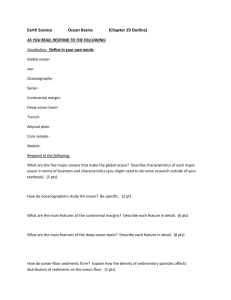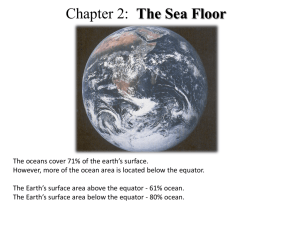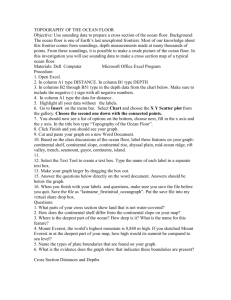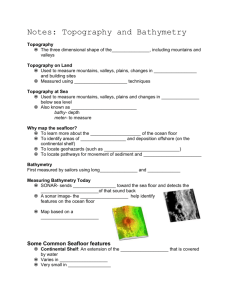CHAPTER IN PERSPECTIVE
advertisement
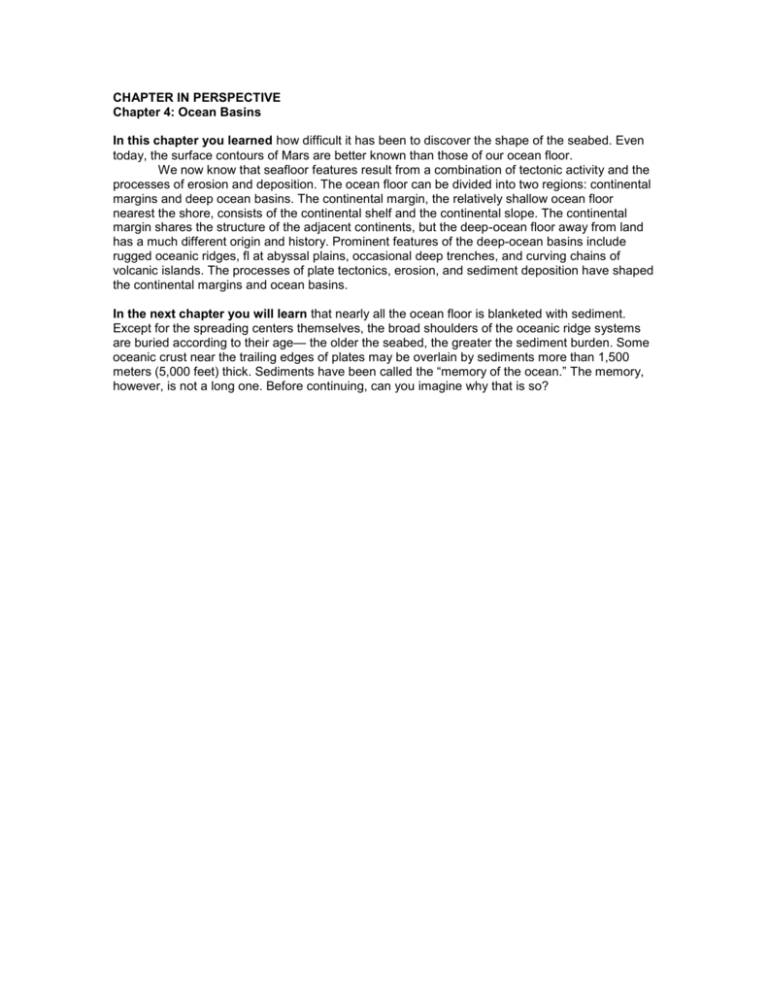
CHAPTER IN PERSPECTIVE Chapter 4: Ocean Basins In this chapter you learned how difficult it has been to discover the shape of the seabed. Even today, the surface contours of Mars are better known than those of our ocean floor. We now know that seafloor features result from a combination of tectonic activity and the processes of erosion and deposition. The ocean floor can be divided into two regions: continental margins and deep ocean basins. The continental margin, the relatively shallow ocean floor nearest the shore, consists of the continental shelf and the continental slope. The continental margin shares the structure of the adjacent continents, but the deep-ocean floor away from land has a much different origin and history. Prominent features of the deep-ocean basins include rugged oceanic ridges, fl at abyssal plains, occasional deep trenches, and curving chains of volcanic islands. The processes of plate tectonics, erosion, and sediment deposition have shaped the continental margins and ocean basins. In the next chapter you will learn that nearly all the ocean floor is blanketed with sediment. Except for the spreading centers themselves, the broad shoulders of the oceanic ridge systems are buried according to their age— the older the seabed, the greater the sediment burden. Some oceanic crust near the trailing edges of plates may be overlain by sediments more than 1,500 meters (5,000 feet) thick. Sediments have been called the “memory of the ocean.” The memory, however, is not a long one. Before continuing, can you imagine why that is so?




